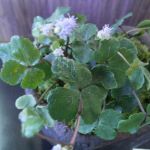| Common Name: |
Chinese Goldthread |
| Other Names: |
Mishmi Bitter |
| Botanical Name: |
Coptis chinensis |
| Genus: |
Coptis |
| Family: |
Ranunculaceae |
| Native Location: |
China |
| Cultivation: |
Moist to wet, rich, slightly acid soil in shade. |
| Propagation: |
By seed sown when ripe; by division in spring. |
| Harvest: |
Roots are lifted in autumn and used fresh or dried in decoctions. |
| Height: |
25cm (10in) |
| Width: |
15cm (6in) |
| Hardiness: |
Z7-10 |
| Parts Used: |
Roots (huang lian) |
| Properties: |
A pungent, very bitter, cooling herb that controls bacterial and viral infections, relaxes spasms, lowers fever, and stimulates the circulation. It is locally analgesic and anesthetic. |
| Medicinal Uses: |
Internally for "hot" conditions, such as dysentery, enteritis, high fever, inflamed mouth and tongue, conjunctivitis, middle ear infection, tuberculosis, and palpitations. Externally for inflamed mucous membranes in mouth and eyes, boils, abscesses, acne, and burns. An ingredient of the Chinese drug san huang zhe she ye ("injection of three yellow herbs"), given intra-muscularly for upper respiratory tract infections. For use by qualified practitioners only. |
| Bibliography: |
Encylopedia of Herbs by Deni Brown Copyright ©: 1995, 2001 Dorling Kindersley Limited pg 179
|

